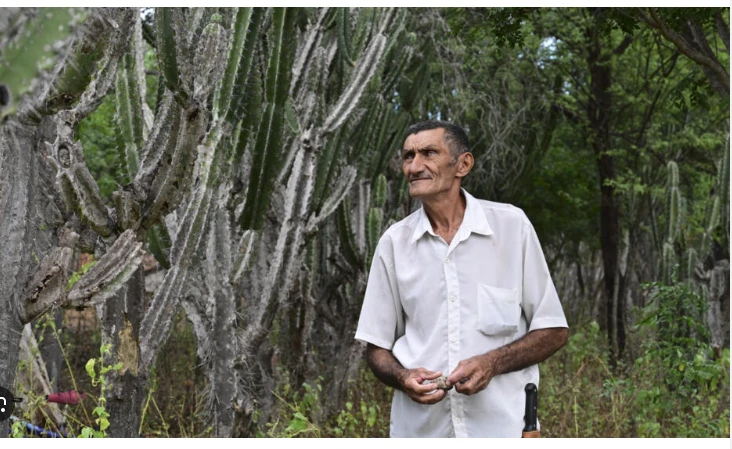Planting giant cactus to stave off desertification in Brazil

Stay tuned with 24 News HD Android App

Giant spiky cacti tower over farmer Alcides Peixinho Nascimento, 70, one of the residents of Brazil's unique Caatinga biome who is on a mission to plant native vegetation in a bid to halt desertification.
"In the absence of laws, it is up to us to act," said Nascimento, who is trying to regenerate his land by planting mandacaru, an emblematic cactus from the region that grows up to six meters tall.
The Caatinga stretches across ten northeastern states, a unique area boasting a tapestry of thorny shrubs, twisty trees and succulents adapted to its semi-arid conditions.
Its plight attracts little interest compared to the lush Amazon, but the vegetation of this dry forest plays a key role in absorbing carbon emissions and is rapidly disappearing.
The MapBiomas NGO reports it has lost 40 percent of its original surface area due to agriculture, mining and the installation of wind farms.
It is in the Caatinga, which has been facing increasingly severe periods of drought, that scientists recently identified the first arid zone in Brazil.
"Preserving the Caatinga means keeping the land alive," said the farmer Nascimento.
Communities are adopting various sustainable farming methods to ensure their survival.
Nascimento's drought-resistant cacti grow fruit that can feed both animals and humans, and protect the soil from the extreme climate.
Their thorns repel predators and are often planted around other crops and native species.
Excess mandacaru production is sold to a French cosmetics brand to make creams and soaps.
- 'Guardians of the Caatinga' -
Luiz Almeida Santos, of the local agricultural NGO IRPAA said the Caatinga was being preserved in areas where "traditional communities live" who adopt sustainable farming practices.
"They are the guardians of the Caatinga".
A recent study predicted nine out of 10 species of fauna and flora in the Caatinga could disappear by 2060.
The IRPAA also teaches local communities how to stretch their water to last through severe drought.
On her land in northern Bahia, Maria Goncalves dos Santos, 60, shows how rainwater is collected and stored in a cistern.
"Here, all the water is reused," she said. Wastewater is filtered and used to water animal pastures.
Goncalves measures the level of the 16,000-liter tank with a ruler and logs her consumption in a notebook.
The government has set up nearly a million tanks like this in the region since 2003.
Installations slowed dramatically under far-right ex-president Jair Bolsonaro, but the program has recently been relaunched under President Luiz Inacio Lula da Silva.
Another threat to the Caatinga is the rural exodus, and the IRPAA has set up a training center where it has taught some 200 young people about sustainable farming methods.
"In our region, we do not have many opportunities, we have to travel to seek knowledge. I am happy to be able to contribute to the well-being of my community," said Anderson Santos de Jesus, 20, who traveled 200 kilometers (124 miles) to reach the training center.
